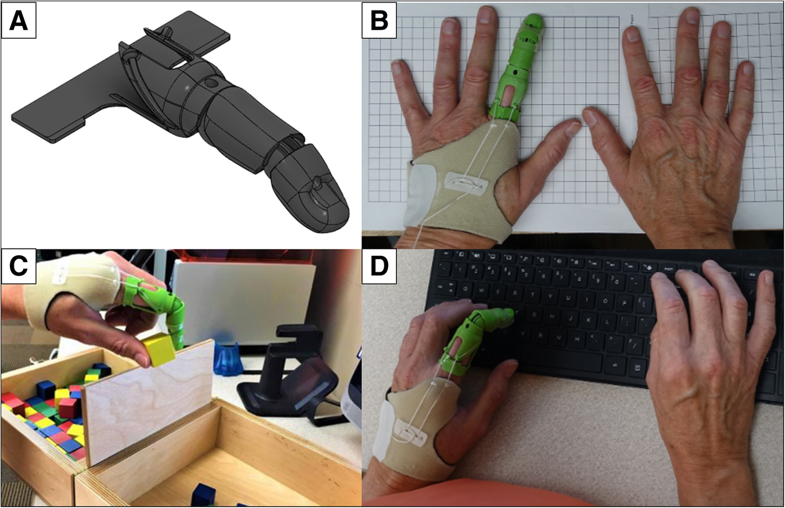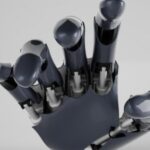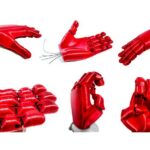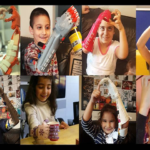

From the University of Nebraska at Omaha, researchers Keaton Young, James E. Pierce, and James M. Zuniga explore prosthetics made via 3D printing in ‘Assessment of body-powered 3D printed partial finger prostheses: a case study.’ Here they learn more about how a hand prosthetic was able to change the quality of life for a 72-year-old man with a partial finger amputation.
Partial loss in the hand such as that of the fingers is considered to be a ‘minor amputation,’ and the authors state that this is unfortunately common; in fact, by 2050 nearly 3.6 million amputations are expected—affecting individuals and all the many tasks they need to complete daily. Many prosthetics are able to assist greatly in activities of daily living (ADLs), along with improving:
- Psychosocial self-esteem
- Body image
- Interlimb coordination
- Body symmetry
Many devices also result in ‘abandonment’ though as patients experience rejection of the device, pain due to ill fit, frustration due to inferior design, and self-consciousness if they are unhappy with aesthetics. Up to 70 percent of individuals with prosthetics report being unhappy with them. In the case study examined during this research, the individual had lost part of the index finger on his right hand. He had previously been using a titanium MCP-Driver™ finger prosthesis (NAKED Prosthetics Inc., Olympia, WA USA) with some success too—although they could be considered cost-prohibitive by some at $9,000 to $19,000. The titanium device would serve as a comparison for the one created in this study.
Fittings began remotely as the debilitated area of the case study patient’s hand was scanned, along with the other non-affected hand—which served as the model for the prosthesis. The 3D printed part allows for pinch grasping—made possible by three segmented sections with simple pivot joints in between each one.
“The device was secured using a customized soft neoprene cast fitted to the palm of the hand, which was used to create an anchoring point for actuation of the device to occur and to reduce the amount of friction that the user may experience from the nylon string utilized to produced rotational force around the LFP’s interphalangeal pivot joints,” explained the authors. “A silicone grip is added onto the fingertip to increase grasp compliance and to prevent slippage of gripped objects. Initial sizing of the prosthesis was performed remotely and began by instructing the patient to photograph both the affected and unaffected limbs including a known measurable scale, such as metric grid paper.”

Parts were printed on an Ultimaker 2 extended, using PLA, including other components like a nylon string and elastic cord responsible for flexion and extension, along with padded form for a ‘soft socket’ and a protective covering to decrease friction.
Results were impressive as the patient was able to move 18 blocks per minute in the gross manual dexterity task without any prosthesis attached. With the prostheses, he could move 22 BPM—while the non-affected limb moved 30 BPM. The locally 3D printed finger prosthesis (LPF) offered similar results to the MFP device, with task-specific efficiency increased up to 73 percent. The researchers stated that this proved either the LFP or the MFP will improve dexterity for the user.
“As the accessibility to 3D printing continues to enlarge, there is great potential for 3D printing to pave the way for multiple new medical applications and devices, which may transform the fabrication process of future medical devices,” concluded the researchers.
To lose functionality of a limb, suffer an amputation, or deal with a congenital defect means you have to work a lot harder than everyone else to do things they take for granted—like walking, running, grasping items, eating, playing a musical instrument, and countless other items. Designers around the world have used the advantages of 3D printing to change the lives of many, from prosthetic legs to walking sticks, devices to assist in outdoor activities, and so much more. Find out more about hand prosthetics here.
What do you think of this news? Let us know your thoughts; join the discussion of this and other 3D printing topics at 3DPrintBoard.com.
[Source / Images: ‘Assessment of body-powered 3D printed partial finger prostheses: a case study]
If you're looking for affordable 3D visualization services in the USA, our platform provides an ideal solution for all your architectural and real estate needs. Through our service, you can access high-quality 3D renderings at competitive prices without compromising on quality. Whether you need interior visualizations, exterior renderings, or architectural animations, our team ensures that you get professional results that fit within your budget. With our support, you can make your projects visually stunning while saving on costs, all with a quick and straightforward process.
Through our site, you can easily order affordable 3D visualizations for your projects, whether for a residential property, commercial development, or architectural design. We understand the importance of staying within budget, and that's why we offer tailored solutions to ensure you get the best value for your investment. Our experts work efficiently to provide you with realistic, photorealistic 3D images that will elevate your presentations and attract clients, making your property stand out in the market.






